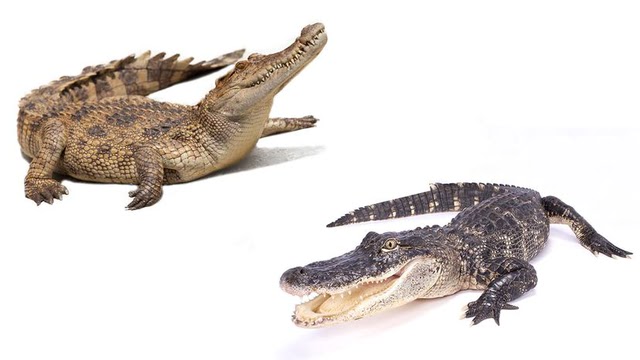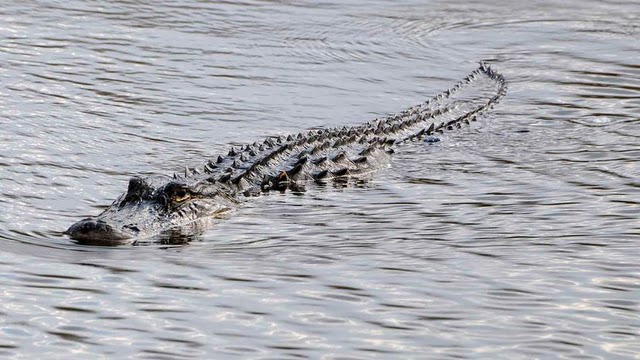Quck answer
Alligators and crocodiles are both large, aquatic reptiles with powerful jaws, but there are some key differences between them. Alligators have a wide, rounded snout, while crocodiles have a longer, more pointed snout. Alligator teeth are visible even when their mouth is closed, while crocodile teeth are mostly hidden. Alligators are found in the southeastern United States and parts of China, while crocodiles are found in Africa, Australia, and South America. Both animals are dangerous and should be avoided in the wild.
Wild Animals

Although alligators and crocodiles may appear similar, they belong to different families within the Crocodylia genus, and they have variations in body size, snout shape, and habitats. Both reptiles live in freshwater and saltwater environments, have sensors on their skin, and hunt similar prey. However, there are some key differences between the two species.
4 Significant Contrasts Between Alligator and Crocodile
Some of the primary differences between these two apex predators are:
- Alligators have wider, u-shaped snouts, while crocodiles have longer, v-shaped snouts that allow them to hide their teeth and deliver a stronger bite.
- Crocodiles are larger than alligators, with the ability to reach up to 20 feet (6 meters) in length.
- Crocodiles prefer brackish water near coastlines, while alligators live in freshwater environments.
- Alligators have webbed feet, while crocodiles have separated toes and a unique fringe at their feet and hind legs.
Common Alligator Species

The Alligatoridae family includes several species of alligators, such as the American alligator, found in the South Florida Everglades where they coexist with crocodiles.
American alligators, caimans, Chinese alligators, and crocodiles are all part of the crocodilian family. American alligators are the largest species and can grow up to 14 feet long, while caimans are smaller at 6 to 8 feet long. Chinese alligators are critically endangered and only found in a few provinces in East China. There are 14 different species of “true” crocodiles in the world, with freshwater and saltwater varieties. Nile crocodiles are one of the largest and most dangerous crocodiles in the world, while Australian and American saltwater crocodiles are the most common subspecies. In a head-to-head matchup, crocodiles would win due to their size and power. While both alligators and crocodiles rarely attack humans, it’s best to keep a safe distance and avoid their natural habitats.
Crocodiles and alligators are not to be underestimated due to their seemingly lazy nature. They are actually faster than they appear, with full-grown crocodiles reaching top land speeds of 15 to 22 miles per hour. Their top jaw and upper teeth can lock down on an arm or leg, making it nearly impossible to pry them loose. These creatures often stalk their prey along waterholes and coastlines, using their top-set eyes and natural motion sensors to stealthily move through the water. Their locking mechanism between their top and bottom jaw allows them to exert the strongest bite power in the animal kingdom, with a force of 3,700 pounds per square inch. The “death roll” technique is used to drown their victims in deeper water. Therefore, it’s important to be cautious around these creatures and not test their power in real life.
FAQ
1. What is the main difference between alligators and crocodiles?
The main difference between alligators and crocodiles is in their snouts. Alligators have a wide, rounded snout, while crocodiles have a longer, more pointed snout. Additionally, alligators are generally darker in color and have a more U-shaped jawline, while crocodiles are lighter in color and have a V-shaped jawline.
2. Are alligators and crocodiles found in the same habitats?
Alligators and crocodiles share some of the same habitats, but they are generally found in different regions. Alligators are found mainly in the southeastern United States and parts of China, while crocodiles are found in Africa, Asia, Australia, and South America.
3. Which species is larger, alligators or crocodiles?
Crocodiles are generally larger than alligators. The largest species of crocodile, the saltwater crocodile, can grow over 20 feet long and weigh over 2,000 pounds. The largest species of alligator, the American alligator, typically grows up to 14 feet long and weighs around 1,000 pounds.
4. Are alligators and crocodiles dangerous to humans?
Both alligators and crocodiles can be dangerous to humans, especially if they feel threatened or cornered. However, attacks on humans are relatively rare and usually occur when people enter their habitats or get too close. It is important to always be cautious and aware of your surroundings when in areas where alligators or crocodiles are known to live.
5. Can alligators and crocodiles interbreed?
No, alligators and crocodiles cannot interbreed. They are two separate species with distinct genetic differences.
6. How do alligators and crocodiles differ in their behavior?
Alligators and crocodiles have different behaviors and lifestyles. Alligators tend to be more docile and prefer freshwater habitats, while crocodiles are more aggressive and can live in both freshwater and saltwater habitats. Crocodiles are also known to be more social and can be found living in groups, while alligators are generally solitary creatures.
7. What do alligators and crocodiles eat?
Alligators and crocodiles are both carnivores and eat a diet mainly consisting of fish, birds, and small mammals. However, crocodiles are known to be more opportunistic hunters and will eat larger prey, such as zebras or even other crocodiles.
8. How do alligators and crocodiles reproduce?
Alligators and crocodiles have similar reproductive behaviors. Females build nests and lay eggs, which are then incubated by the warmth of the sun. After hatching, the young are left to fend for themselves and must avoid predators until they are large enough to defend themselves.
9. Which species is more heavily hunted for their skin, alligators or crocodiles?
Both alligators and crocodiles are hunted for their skin, but crocodiles are more heavily hunted due to the demand for their skin in luxury fashion industries. Alligator hunting is more heavily regulated in the United States, while crocodile hunting is often unregulated in other parts of the world.
10. Are alligators and crocodiles considered endangered species?
Both alligators and crocodiles have been considered endangered species at various times due to overhunting and habitat destruction. However, due to conservation efforts, populations of both species have rebounded in recent years. The American alligator is no longer considered endangered, while some species of crocodile, such as the saltwater crocodile, are still considered threatened in some areas.





Leave a Reply